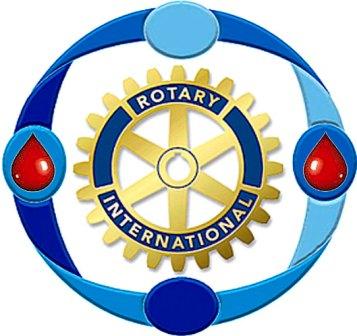 Too little donor blood is available in some parts of the world, and - perhaps - too much in the rest.
Too little donor blood is available in some parts of the world, and - perhaps - too much in the rest.
· In the developing world, for various reasons, millions of patients in need of transfusion do not have timely access to and availability of safe blood to improve their health or save their lifes.
· In the richer part of the world, the argument goes, there are indications “that transfusions are often given unnecessarily when simpler, less expensive treatments can provide equal or greater benefit.” One of the reasons for this is the practice of rational use of blood where adequate supplies of donor blood are available, always or most of the time.
Leading clinical haematologist and Transfusion Medicine specialist, Dutch professor Cees Th. Smit Sibinga, argues that the “prime reason” for lack of donor blood in the less fortunate part of the world, “is due to poor logistics of collection and a supply driven system rather than a conscious demand driven system as we handle in the Western world”.  Prof. Cees Smit Sibinga
Prof. Cees Smit Sibinga
“That means that there is poor and inadequate communication between the consumers and the suppliers part of the vein-to-vein chain in transfusion medicine. The cold chain and processing problems are secondary,” Prof. Smit Sibinga says.
As one such example, it has been reported that hundreds of units of life-saving blood are going to waste in many of the blood banks in the Indian state of Kerala at a time when the state is grappling with the problem of low rate of voluntary blood donation. The given reasons: poor storage facilities and lack of blood component separation units.
“Indeed, that happens in many places in the World. The gap between the clinical use (prescribers) and the collection of blood (drives) – the so called clinical interface - is still poorly developed, and this is an important fact to stress,” Prof. Smit Sibinga says.
“All these enthusiastic blood drives are time after time an effort that results in a substantial percentage of unnecessary waste of the ‘gift of life’,” Prof. Smit Sibinga says. Futhermore, “since World Blood Donor Day was instituted (2005; WHA Resolution WHA58.13: Blood Safety: Proposal to Establish World Blood Donor Day) still many enthusiastic recruiters strive for record/champion numbers of collections on that very day, without realizing that most of it will not end up at the bedside.”
And “that is why I keep making a plea for proper structure and control of the blood supply and consumption, preferably nationally supported,” he points out.
“I once in Semarang, Indonesia, was consulted by the director of the Blood Center. She was offered by the commander of the Mid Java Army Corps that all soldiers would donate blood on Army Day. She was both grateful and embarrassed by the offer. How could you collect thousands of units of blood on one day without having consumables, staff and indeed storage capacity. Most of it would expire before reaching the bedsides in the Semarang hospitals. I gave her the following solution: accept the offer symbolically and organize with the commander a weekly blood donation drive for the respective platoons of soldiers. It happened that way and very little was wasted, the Blood Center was not overstressed and the commander was given the credit for this strategy,” Prof. Smit Sibinga recounts.
Prof. Cees Smit Sibinga has been involved in the Transfusion Medicine and quality systems and management for economically restricted countries since 1980 through development of his work with the World Health Organization (WHO), the World Federation of Haemophilia (WFH) and the International Consortium for Blood Safety (ICBS). For a number of years, he has served as a Director of Global Network for Blood Donation, a Rotarian Action Group. (GNBD).
Co-authoring the article ‘Transmission of HIV Through Blood – How To Bridge the Knowledge Gap’ (in “HIV and AIDS - Updates on Biology, Immunology, Epidemiology and Treatment Strategies”, Nancy Dumais Ed., 2011), Cees Smit Sibinga and his colleague John P. Pitman write:
“In the majority of economically restricted countries the transfusion chain from vein-to-vein is determined by what happens to be available. The supply drives the system. When a clinical need occurs, either the scarce hospital or blood bank stock is being used and exhausted or family is urged to search for blood donors, whether family related, friends or what the market offers. Often that results in under-treatment of patients, unjustified use or no treatment at all.”
In addition, WHO estimates that 4 million units of donor blood per year are not routinely tested for Hepatitis B (HBV) and Human immunodeficiency Virus (HIV). Even more are not tested for Hepatitis C (HCV). This happens in 39 countries. Irregular supply of test kits is one of the most common barriers to routine screening
No estimates are available for how many tens of thousands of patients succumb every year in some parts of the world because of lack of donor blood or infected donor blood. But the figure may be alarming. The World Health Organization stops at the formulation “millions of patients needing transfusion do not have timely access to safe blood.”
It is estimated that (regular) donation by 1% of the population (10 per 1000) is generally the minimum needed to meet a country's most basic requirements for donor blood.
According to the latest available figures (2011) from WHO fact sheet #279, about half of the 92 million blood donations were collected in developed high-income countries, home to just about 15% of the world’s population.
In 82 countries, donation rates were still less than 10 per 1000 population. All were either developing (low-income) or transitional (middle-income) countries.
In the richer part of the world, the availability of donor blood is not without problems, according to some transfusion experts.
“Not only is this a waste of a scarce resource but it also exposes patients to the risk of serious adverse transfusion reactions or infections transmitted through the blood,” Cees Smit Sibinga and his colleague John P. Pitman believe.
The two experts point to data from WHO illustrating “a major gap in awareness and knowledge among policy makers and blood transfusion professionals, both in the procurement and prescribing parts of the vein-to-vein blood transfusion chain in transitional and even more prominent in developing countries.”
The blood supply and its clinical use should be firmly embedded in the health care system with major involvement of the community, the medical experts emphazise.
“When the blood supply becomes a community issue, awareness and responsibility for providing healthy blood according to a principle of sharing becomes the norm for people rather than being dragged into blood donation because of the urgent needs of family and relatives who might die if you would not donate immediately,” Cees Smit Sibinga and his colleague say.
There are 3 types of blood donation: voluntary (unpaid) donations, family/replacement donations, and paid donations.
Donors who give blood voluntarily, regularly and for altruistic reasons have the lowest prevalence of HIV, hepatitis viruses and other blood-borne infections, as compared to people who donate uniquely for friends and family members or because of payment.
It is the principle of ‘today me, tomorrow you’ as a social act of solidarity.
Footnotes:
Prof. Cees Smit Sibinga can be contacted at: c.sibinga@planet.nl
Comments may also be sent to: editor@ourblooddrive.org